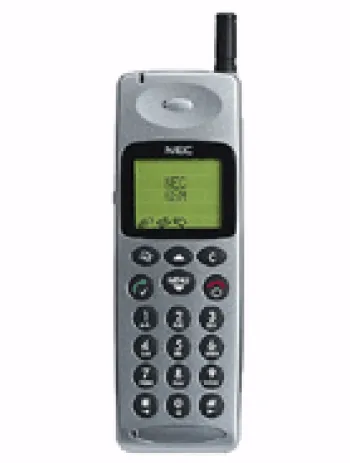
Overview of the NEC e232
The NEC e232 is a feature phone that was announced in the second quarter of 2003 and has since been discontinued. At its time of release, it was a respectable option for users seeking basic mobile phone functionality with a few added features. The device is compact and lightweight, making it a convenient option for those who prioritize portability. Let's delve into its specifications and capabilities.
Design and Build
The NEC e232 sports a compact design with dimensions of 90 x 43 x 23 mm and a weight of 90 grams. Its small form factor and light weight make it easy to carry and handle. The phone uses a Mini-SIM and its body is designed to be practical rather than flashy, focusing on functionality and ease of use. Despite its simplicity, the design was considered modern and user-friendly for its time.
Display
The phone features a TFT display with support for 65K colors, which was relatively advanced for its time. The resolution of 128 x 160 pixels allows for basic visual clarity necessary for navigating menus and viewing simple graphics. However, the size of the display is modest, typical for early 2000s feature phones, focusing more on text-based interactions rather than multimedia.
Camera
Photography was not a primary focus for feature phones from this era, and the NEC e232 is no exception. It is equipped with a basic CIF camera with a resolution of 0.1 megapixels. This is suitable for casual snaps that might have been more about the novelty of having a camera on a phone rather than quality. There is no video recording feature available, which aligns with the basic functionality anticipated from such a device during its release period.
Network and Connectivity
The NEC e232 operates on GSM technology, supporting 2G bands across GSM 900, 1800, and 1900. Although there is GPRS support for basic internet connectivity, advanced features like EDGE, 3G, or beyond were not available, making web browsing capabilities limited. The phone lacks Bluetooth, WLAN, and positioning services, which means data transfer is primarily restricted to available data services or physical connectivity options, such as USB, though specifics on USB types are not detailed.
Memory
In terms of memory, the NEC e232 does not support external memory card slots, which is typical for phones of its generation. It has a phonebook capacity to store up to 500 contacts with 8 fields each, and also supports photo call functionality. Call records include details of the last 10 dialed, received, and missed calls, aligning with its core functionalities as a communication tool.
Sound and Alerts
Sound features on the NEC e232 cater to basic needs with support for vibration and polyphonic ringtones. The absence of a loudspeaker and a 3.5mm audio jack means that audio functionalities are restricted. Consequently, multimedia experiences, such as listening to music, are limited, which reflects the device's primary usage as a communication tool rather than a multimedia gadget.
Features and Applications
Despite its limited specs, the NEC e232 comes with useful features for communication. It supports SMS, EMS, and MMS messaging, accommodating a range of message types beyond simple text. The device includes a WAP 1.2.1 browser, which, though limited by modern standards, provided basic internet access and WAP-based services that were common at the time. The phone also incorporates 5 built-in games for entertainment and passes on any support for Java applications.
Battery Performance
The phone is powered by a removable Li-Ion 700 mAh battery. While this capacity might appear modest by today's standards, it allowed for up to 220 hours of standby time and approximately 3 hours and 30 minutes of talk time. This battery lifespan is decent for its era, considering the phone's limited feature set. Users could rely on the device for several days of regular usage without needing frequent recharges.
Conclusion
The NEC e232 served its purpose well in the early 2000s as a reliable feature phone designed for essential communication tasks. While it doesn’t compete with modern smartphones on specifications or capabilities, it successfully provided users with a dependable mobile communication solution in its day. Highlighting simplicity and portability, the NEC e232 reflects a time when mobile phones were steadily evolving, gradually shifting from pure communication tools to multifaceted devices catering to a multitude of user needs.
Key Features of NEC e232
- GSM Technology: Supports GSM 900 / 1800 / 1900 bands for 2G network connectivity.
- Lightweight Design: Compact dimensions of 90 x 43 x 23 mm and a weight of just 90 g (3.17 oz).
- Color Display: TFT screen with 65K colors and a resolution of 128 x 160 pixels.
- Photo Call: Phonebook capacity for 500 entries with photo call feature.
- Messaging Capabilities: Supports SMS, EMS, and MMS for versatile messaging options.
- Removable Battery: Equipped with a removable Li-Ion 700 mAh battery providing up to 220 hours of standby time and 3.5 hours of talk time.
- Downloadable Ringtones: Supports vibration and downloadable polyphonic ringtones.
NEC e232 Device Drawbacks
- No EDGE support for faster data transfer.
- Discontinued model with no further updates available.
- Display lacks size specification, which may indicate a small screen.
- No card slot for expandable memory options.
- No video recording capability in the main camera.
- No selfie camera available.
- No loudspeaker and 3.5mm jack for audio output.
- Lack of modern communication features like WLAN, Bluetooth, and Positioning systems.
- No radio functionality for FM listening.
- WAP 1.2.1 browser is outdated for current web standards.
- No Java support for additional app installations.

View Also
More Phones
All Rights Reserved +14266 Phones © Mobilawy 2025

























